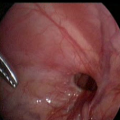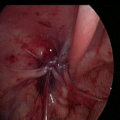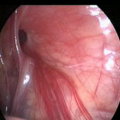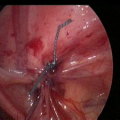You are here
Hernia in Infants & children
Hernia is a common problem in children. There are many types of hernias. The most important & commonest is inguinal hernia
1. Inguinal Hernia
In this condition, there is a swelling in the groin. It usually comes out when the child is crying or straining & disappears when the child is quiet. It may occur on one or both sides. It is more common in boys but can also occur in girls. It occurs due to a persistent communication between the abdomen & the scrotum/labia (called patent processus vaginalis - PPV). The opening is present by birth, but the child can have a hernia at any age. The intestines (or ovaries in girls) come out of the abdomen into the hernial sac.
Inguinal hernia needs to be treated surgically irrespective of the age of the child. Early surgery is recommended to avoid the complication of incarceration or obstruction, where the contents of the hernia get stuck in the sac & do not go back into the abdomen even with gentle physical manipulation. In this situation, it becomes an emergency & can have more serious consequences. Hence, an elective (planned) hernia repair is advised as early as possible.
Repair of inguinal hernia in children is a very successful operation (success of over 98-99% in older children & 95% in small babies). Traditionally, open operation is done thru a groin incision where the hernial sac is identified, dissected out, cut at its upper part (connection with the abdomen) & closed.
Laparoscopic Inguinal Hernia repair in Children
More recently, laparoscopy has become popular for repair of inguinal hernias in children. The major advantages of laparoscopy are
1. Better & magnified vision enabling better & safe dissection of the hernia sac from the vital structires (vas & testicular vessels)
2. Ability to simultaneously identify hernia on the opposite side which may later appear as a swelling (there is 30-50% chance of hernia on the opposite side). If a hernia is present on the opposite side, it can be simultaneously closed so that the child need not undergo another anesthesia & operation later on when that hernia becomes manifest.
We have done over 200 laparoscopic inguinal hernia repairs in infants & children over the past 3 years.
Case Scenario (Laparoscopic repair of Inguinal Hernia in a 1 month old baby boy)
A 1 month old baby boy (3.2 kg body weight) presented with inguinal hernia on the left side. A laparoscopic repair was planned after discussing the advantages with the parents. Laparoscopy revealed that he had a hernia on the right side also. Both the hernias were repaired laparoscopically with excellent result
If this child had undergone open surgery for the left hernia, there is a very high chance that he would have required another surgery for the right hernia in future
Below are the laparoscopic photos of this child




Lt hernia defect Lt hernia closed Rt hernia defect Rt hernia closed